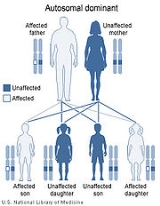
WHIM syndrome
Encyclopedia
WHIM Syndrome is a rare congenital immunodeficiency disorder characterized by chronic noncyclic neutropenia
.
 WHIM syndrome results from autosomal dominant mutation
WHIM syndrome results from autosomal dominant mutation
s in the gene for the chemokine
receptor, CXCR4
, resulting in a carboxy-terminus truncation of the receptor of between ten and 19 residues. The gene mutant is located on 2q21. The truncation of the receptor protein results in the inability of downregulation after stimulation. Thus, the receptor remain in an activated state. WHIM syndrome is one of only a few diseases directly and primarily caused by an aberrant chemokine, making its molecular biology important in understanding the role of cell signaling and trafficking.
An association with GRK3 has also been observed.
Neutropenia
Neutropenia, from Latin prefix neutro- and Greek suffix -πενία , is a granulocyte disorder characterized by an abnormally low number of neutrophils, the most important type of white blood cell...
.
Diagnosis
Patients exhibit increased susceptibility to bacterial and viral infections, especially from common serotype human papilloma virus, resulting in warts on the hands and feet starting in childhood. Myelokathexis refers to retention (kathexis) of neutrophils in the bone marrow (myelo). In addition, lymphocytes and antibody levels (gammaglobulins) are often deficient.Pathophysiology

Mutation
In molecular biology and genetics, mutations are changes in a genomic sequence: the DNA sequence of a cell's genome or the DNA or RNA sequence of a virus. They can be defined as sudden and spontaneous changes in the cell. Mutations are caused by radiation, viruses, transposons and mutagenic...
s in the gene for the chemokine
Chemokine
Chemokines are a family of small cytokines, or proteins secreted by cells. Their name is derived from their ability to induce directed chemotaxis in nearby responsive cells; they are chemotactic cytokines...
receptor, CXCR4
CXCR4
C-X-C chemokine receptor type 4 also known as fusin or CD184 is a protein that in humans is encoded by the CXCR4 gene.- Function :...
, resulting in a carboxy-terminus truncation of the receptor of between ten and 19 residues. The gene mutant is located on 2q21. The truncation of the receptor protein results in the inability of downregulation after stimulation. Thus, the receptor remain in an activated state. WHIM syndrome is one of only a few diseases directly and primarily caused by an aberrant chemokine, making its molecular biology important in understanding the role of cell signaling and trafficking.
An association with GRK3 has also been observed.

